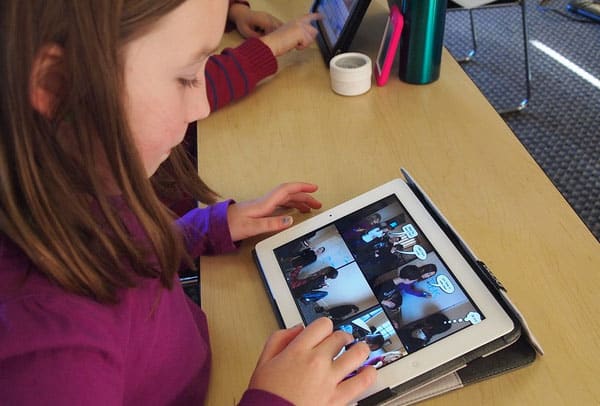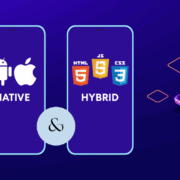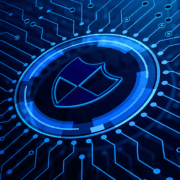The Impact of Mobile Apps on Self-Paced Learning
Since we recovered from the pandemic and entered a new decade, the education landscape has experienced a seismic shift, prompting a surge in the adoption of self-paced learning. Several factors promoted the rise in the popularity of self-paced learning, but the one thing that empowered it the most– mobile apps.
And now, self-paced learning on mobile apps has become a significant part of the entire education industry around the globe. Self-paced learning, in particular, has been revolutionised by mobile apps, offering learners the flexibility, accessibility, and personalisation necessary to enhance educational outcomes.
This blog explores the profound impact of mobile apps on self-paced learning in different ways, highlighting their benefits and future potential.
How Mobile Apps Improved Self-Paced Learning?
Learning is no longer limited to a specific time or place. Rather, it is a dynamic and continuous experience, all thanks to mobile apps. The contribution of mobile apps in improving the effectiveness of self-paced learning cannot be ignored, as we all have witnessed their transformative power.
Here are some prominent ways in which mobile apps have not only improved self-paced learning but have almost transformed it;
Better Accessibility and Flexibility
Mobile apps have transcended traditional learning boundaries, making learning more accessible and flexible for students. Mobile apps allow students to learn at their own pace, receive feedback, and access a wide range of courses from different platforms.
This flexibility is particularly beneficial for working professionals and students from remote areas. Apps like Coursera and Duolingo exemplify this shift by offering courses that learners can engage with at their convenience.
Personalised Learning Experiences
Mobile apps leverage artificial intelligence and machine learning to offer personalised learning experiences. These technologies analyze user behaviour, preferences, and performance to tailor content that meets individual learning needs.
Personalized learning paths ensure that learners progress at their own pace, revisiting concepts as needed and advancing when ready. This personalized approach fosters better engagement and knowledge retention.
Interactive and Engaging Content
Mobile apps utilize multimedia elements such as videos, quizzes, interactive simulations, and gamification elements to make learning more engaging. Interactive content not only captures learners’ attention but also facilitates a better understanding of complex concepts.
Such content makes studying more enjoyable and encourages continuous learning, especially among younger audiences. Interactive and engaging content acts as a catalyst for self-paced learning, promoting learners to engage more.
Microlearning and Bite-Sized Content
Mobile apps are well-suited for delivering microlearning and bite-sized educational content– small, focused learning units designed for quick consumption. Microlearning enables learners to acquire knowledge in small and manageable parts, reducing learning overload and enhancing retention.
Educational mobile apps that deliver bite-sized content play a key role in improving self-paced learning, as they allow learners to easily understand complex concepts at their own pace.
Real-Time Feedback and Progress Tracking
Immediate feedback is crucial for effective self-paced learning, and mobile apps excel in providing real-time assessments. Quizzes, tests, and interactive exercises allow learners to evaluate their understanding instantly.
Additionally, progress-tracking features help learners monitor their achievements and identify areas for improvement. Progress tracking dashboards help users manage their speed of learning by visually displaying their learning milestones and encouraging consistent progress.
Collaborative Learning Opportunities
The social and collaborative features of educational mobile apps play a significant role in self-paced learning. Learners can interact with each other as well as educators to get answers to specific questions, seek guidance for specific topics, and understand complex concepts easily at any stage of their learning process.
Discussion forums, peer reviews, and group projects enable learners to interact, share ideas, and collaborate better to keep the pace of learning consistent. This blend of self-paced and collaborative learning enhances the learner’s experience.
Skill Development Beyond Academics
Educational mobile apps are helping learners beyond academics in their self-paced learning process. Mobile apps foster self-discipline and motivation among learners, which is essential to maintaining the effectiveness of self-paced learning.
Mobile apps motivate students to engage in learning activities, improving their focus and interest in education. By defining their own pace of academic learning, learners get the opportunity to develop soft skills such as communication, creativity, and teamwork with the help of educational mobile apps.
Cost-Effective Learning Solutions
Before mobile apps, self-paced learning was not a cost-effective option for most learners, as it required them to acquire their own educational resources apart from the ones available in classrooms and institutions.
However, mobile apps have now made self-paced learning affordable for everyone by providing all essential resources in one place, and that too at great affordability. From international educators to world-class learning material, students can get easy access to anything that empowers their learning efforts at their own pace.
Challenges and Considerations
While mobile apps offer numerous advantages, they also present challenges that can impact the effectiveness of self-paced learning. One major concern is the potential for distraction. Self-paced learning requires intense dedication and focus, but the multifunctionality of mobile devices can disturb learning sessions. Due to this, some learners may struggle to keep their learning process on track.
To overcome such challenges, educational institutions and mobile app developers can integrate features like focus mode and progress reminders to motivate learners to get back to their learning process. Such features can minimize distractions and improve the effectiveness of self-paced learning.
Future Aspects of Mobile Apps in Self-Paced Learning
The future of mobile learning apps in self-paced learning looks promising, with emerging technologies set to further enhance it. Augmented reality (AR) and virtual reality (VR) will offer immersive learning experiences, enabling learners to engage with content in interactive and realistic environments.
Artificial intelligence will continue to refine personalization, making learning even more adaptive to individual needs. As mobile technology advances, mobile apps will become more inclusive, accessible, and effective, further enhancing self-paced learning.
Closing Remarks
Mobile apps have undeniably transformed self-paced learning by offering flexibility, personalization, and engaging content. They empower learners to take control of their education, access diverse resources, and learn at their own pace.
While challenges exist, the continued evolution of mobile apps promises to address these issues and unlock new opportunities for lifelong learning. Embracing these innovations will not only enhance self-paced learning experiences but also contribute to a more educated and empowered global community.




